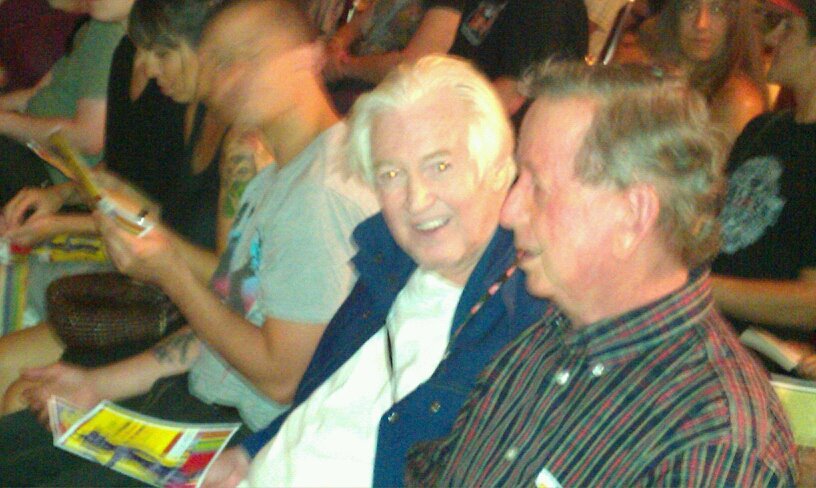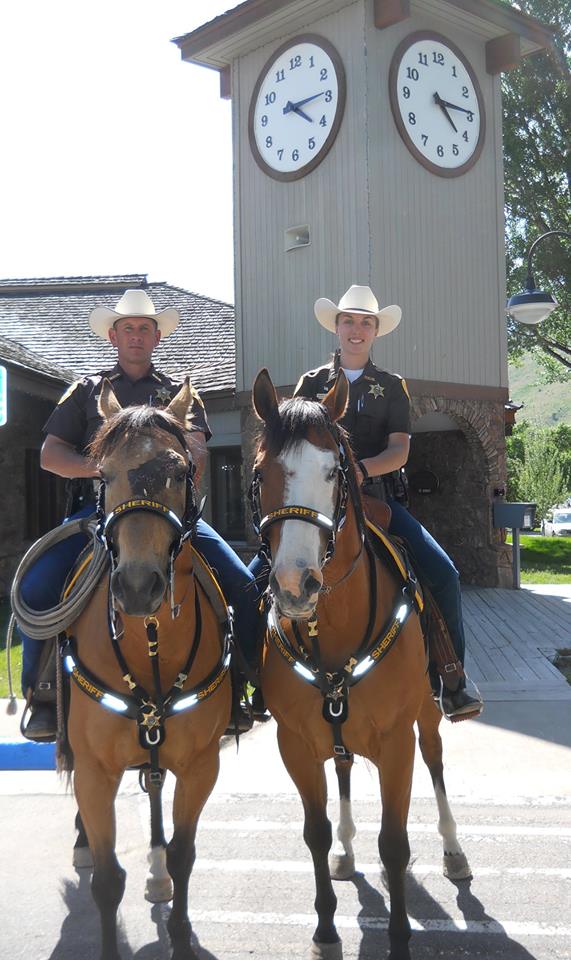“Prominent rabbi quits Harvard antisemitism committee, brands college’s ideology ‘evil’
Harvard’s lame attempt at damage control after its disastrous and morally ugly institutional response to the Hamas atrocities of 10/7 is already falling apart”.

My 8th. grandfather, John Wilson, appears to have started a long war with Native Americans. My ex-friend, Mark Gall, told me the Jews had a right to return to their native lands, and are the moral equivalent of Native Americans – wanting their lands back. I told Gall the Jews were not indigenous to the area known as the Promised Land – to no avail! So, here we are up to our eyes balls in war over indigenous lands in Israel, that is resulting in much wampum funding being – taken away!
Several times I offered to write a book with Mr. Gall, but, he was convinced I was “odd” even a Nazi. He had ostracized me, and kept me away from his Jewish friends. He thought he had – won – and I was finished! I kept our e-mails thinking one day – they would be famous!
Mark is on the right in the pic above, sitting next to our late friend, Ed Corbin, who also went to Harvard. We are at the premiere of his son’s movie, Cosmos Corbin, who is a Jew.
John Presco
“The presidents of three prominent colleges forcefully condemned antisemitism at their schools Tuesday, while highlighting the challenge of protecting free speech amid rising tension on college campuses over the past several weeks.
Claudine Gay, the president of Harvard University, told lawmakers Tuesday that “antisemitism has no place at Harvard” and that she has heard “reckless and hateful language on our campus.” At the same time, she noted that the school is “deeply committed to protecting free expression even of views that we find objectionable and outrageous and offensive
“What we seek is not simply free expression but the reasoned dialogue that leads to truth and discovery and that does the work of moving us all forward,” she said. “We don’t always get it right and our students don’t always get it right and when they transgress they are held accountable.”
The comments came as part of a hearing on Capitol Hill focused on antisemitism on college campuses. Gay joined Sally Kornbuth, the president of the Massachusetts Institute of Technology, and Elizabeth Magill, president of the University of Pennsylvania, testifying before the House of Representatives Education and Workforce Committee.
“Continued attacks and murders roused Connecticut to action. “All through the winter of 1636-37 the Connecticut towns were kept in a state of alarm by the savages. Men going to their work were killed and horribly mangled. A Wethersfield man was kidnapped and roasted alive. Emboldened by the success of this feat, the Pequots attacked Wethersfield, massacred ten people, and carried away two girls.”[6] To help bring spiritual aid, Boston had declared a Fast Day on January 19, 1637, recognizing the “dangers of those at Connecticut.”[7]
The Pequot War was an armed conflict that took place in 1636 and ended in 1638 in New England, between the Pequot tribe and an alliance of the colonists from the Massachusetts Bay, Plymouth, and Saybrook colonies and their allies from the Narragansett and Mohegan tribes. The war concluded with the decisive defeat of the Pequot. At the end, about 700 Pequots had been killed or taken into captivity.[1] Hundreds of prisoners were sold into slavery to colonists in Bermuda or the West Indies;[2] other survivors were dispersed as captives to the victorious tribes.
The result was the elimination of the Pequot tribe as a viable polity in southern New England, and the colonial authorities classified them as extinct. Survivors who remained in the area were absorbed into other local tribes.
The Mystic Massacre started in the predawn hours of May 26, 1637, when colonial forces led by Captains John Mason and John Underhill, along with their allies from the Mohegan and Narragansett tribes, surrounded one of two main fortified Pequot villages at Mistick. Only 20 soldiers breached the palisade’s gate and they were quickly overwhelmed, to the point that they used fire to create chaos and facilitate their escape. The ensuing conflagration trapped the majority of the Pequots; those who managed to escape the fire were slain by the soldiers and warriors who surrounded the fort.
Mason later declared that the attack against the Pequots was the act of a God who “laughed his Enemies and the Enemies of his People to scorn”, making the Pequot fort “as a fiery Oven”, and “thus did the Lord judge among the Heathen.”[23] Of the estimated 500 Pequots in the fort, seven were taken prisoner and another seven escaped to the woods.[24]
The Narragansetts and Mohegans with Mason and Underhill’s colonial militia were horrified by the actions and “manner of the Englishmen’s fight… because it is too furious, and slays too many men.”[25][26] The Narragansetts attempted to leave and return home, but were cut off by the Pequots from the other village of Weinshauks and had to be rescued by Underhill’s men—after which they reluctantly rejoined the colonists for protection and were used to carry the wounded, thereby freeing up more soldiers to fend off the numerous attacks along the withdrawal route.
Historicity of the Exodus[edit]
Further information: Sources and parallels of the Exodus
On Passover 2001, Wolpe told his congregation that “the way the Bible describes the Exodus is not the way it happened, if it happened at all.”[16] Casting doubt on the historicity of the Exodus during the holiday that commemorates it brought condemnation from congregants and several rabbis (especially Orthodox Rabbis). The ensuing theological debate included whole issues of Jewish newspapers such as The Jewish Journal of Greater Los Angeles and editorials in The Jerusalem Post, as well as an article in the Los Angeles Times. Critics asserted that Wolpe was attacking Jewish oral history, the significance of Passover and even the First Commandment.[16][17] Orthodox Rabbi Ari Hier wrote that “Rabbi Wolpe has chosen Aristotle over Maimonides, theories and scientific method over facts”. Wolpe, on the other hand, was defended by Reform Rabbi Steven Leder from the Wilshire Boulevard Temple, who argued that “defending a rabbi in the 21st century for saying the Exodus story isn’t factual is like defending him for saying the earth isn’t flat. It’s neither new nor shocking to most of us that the earth is round or that the Torah isn’t a history book dictated to Moses by God on Mount Sinai.”[18]
Wolpe asserted that he was arguing that the historicity of the events should not matter, since he believes faith is not determined by the same criteria as empirical truth. Wolpe argues that his views are based on the fact that no archeological digs have produced evidence of the Jews wandering the Sinai Desert for forty years, and that excavations in Israel consistently show settlement patterns at variance with the Biblical account of a sudden influx of Jews from Egypt.
https://en.wikipedia.org/wiki/David_Wolpe
In March 2010, Wolpe expounded on his views saying that it was possible that a small group of people left Egypt, came to Canaan, and influenced the native Canaanites with their traditions. He added that the controversy of 2001 stemmed from the fact that Conservative Jewish congregations have been slow to accept and embrace biblical criticism. Conservative rabbis, on the other hand, are taught biblical criticism in rabbinical school.[19]
Oct. 8, 2013, 11:03 AM PDT
By Tia Ghose
The origin of the Ashkenazi Jews, who come most recently from Europe, has largely been shrouded in mystery. But a new study suggests that at least their maternal lineage may derive largely from Europe.
Though the finding may seem intuitive, it contradicts the notion that European Jews mostly descend from people who left Israel and the Middle East around 2,000 years ago. Instead, a substantial proportion of the population originates from local Europeans who converted to Judaism, said study co-author Martin Richards, an archaeogeneticist at the University of Huddersfield in England.
https://www.tabletmag.com/sections/israel-middle-east/articles/bellerose-aboriginal-people
Seal of Massachussets
Posted on November 29, 2019 by Royal Rosamond Press


 Look what I just found! I own Great American Permission. I was introduced to the Mayor of Boston after I won my case against the Mafia Tribe. Chief Little Shell is the muse of this seal. He fought for millions of acres in Montana where my battle with Rena Easton began. This is EPIC!
Look what I just found! I own Great American Permission. I was introduced to the Mayor of Boston after I won my case against the Mafia Tribe. Chief Little Shell is the muse of this seal. He fought for millions of acres in Montana where my battle with Rena Easton began. This is EPIC!
Who owns America now – bitch!
The Reverend Wilson saved the life of a young English maid who has been kidnapped by a Piguot Terrorist. He tells a man with a gun to aim it, and kill that Indian, as they were called in Hollywood. This is Liz Taylor’s great grandfather, too!
John Presco
John Presco



“Continued attacks and murders roused Connecticut to action. “All through the winter of 1636-37 the Connecticut towns were kept in a state of alarm by the savages. Men going to their work were killed and horribly mangled. A Wethersfield man was kidnapped and roasted alive. Emboldened by the success of this feat, the Pequots attacked Wethersfield, massacred ten people, and carried away two girls.”[6] To help bring spiritual aid, Boston had declared a Fast Day on January 19, 1637, recognizing the “dangers of those at Connecticut.”[7]
Cotton Mather records this event during this frightening time:
A Pequot-Indian, in a canoo, was espied by the English, within gunshot, carrying away an English maid, with a design to destroy her or abuse her. The soldiers fearing to kill the maid if they shot at the Indian, asked Mr. [Rev. John] Wilson’s counsel, who forbad them to fear, and assured them “God will direct the bullet!” They shot accordingly; and killed the Indian, though then moving swiftly upon the water, and saved the maid free from all harm whatever.[8]
Little Shell attempted to sell his remaining lands for $1.00 per acre and be allowed to have at least 10,000,000 acres (40,000 km2) of remaining lands in Montana, North Dakota and South Dakota set aside as a Reservation. The Americans offered to pay 10 cents an acre (which became known as the infamous “Ten-Cent Treaty”[1]) and refused to set aside the 10,000,000 acres (40,000 km2) reservation. No agreement was reached. The United States agent brought in 32 other Chippewa leaders who signed the treaty.[citation needed]
Little Shell’s Montana lands started at the Missouri River on the Montana-North Dakota border, then followed the Yellowstone river to its beginning, and probably included the Big Belt Mountains and Little Belt Mountains, and may have reached to the Rocky Mountains near Augusta. Of course, the plains Anishinaabeg shared their Montana lands with the Assiniboine and probably the Gros Ventre, as well.[citation needed]
Seal of Massachusetts
From Wikipedia, the free encyclopedia
(Redirected from Great Seal of Massachusetts)
Jump to navigation Jump to search
| Great Seal of the Commonwealth of Massachusetts | |
|---|---|
| Versions | |
| Armiger | Commonwealth of Massachusetts |
| Adopted | December 13, 1780 |
| Motto | Ense petit placidam sub libertate quietem |
| Coat of Arms of the Commonwealth of Massachusetts | |
|---|---|
| Versions | |
| The simplified coat of arms used in the state flag and larger signage[1] | |
| Historical coat of arms (1876) | |
| Armiger | Commonwealth of Massachusetts |
| Adopted | 1775 |
| Motto | Ense petit placidam sub libertate quietem |
The Great Seal of the Commonwealth of Massachusetts contains the coat of arms of Massachusetts. The coat of arms is encircled by the Latin text “Sigillum Reipublicæ Massachusettensis” (literally, The Seal of the Republic of Massachusetts). The Massachusetts Constitution designates the form of government a “commonwealth,” for which Respublica is the correct Latin term. The Seal uses as its central element the Coat of Arms of Massachusetts. An official emblem of the State, the Coat of Arms was adopted by the Legislature in 1775, and then reaffirmed by Governor John Hancock and his Council on December 13, 1780. The present rendition of the seal was drawn by resident-artist Edmund H. Garrett, and was adopted by the state in 1900.[2] While the inscription around the seal is officially in Latin, a variant with “Commonwealth of Massachusetts” in English is also sometimes used.[3]
Contents
History[edit]



Clockwise from top-left: the first seal of the Massachusetts Bay Colony with a crude portrayal of a Native with his arrow pointed in a gesture of peace, the 1775 revolutionary seal featuring the motto and armed sword which would appear disembodied upon the crest, and Little Shell, the Ojibwe chief who was model for the present-day seal.[2]
The seal was adopted by the Provincial Congress on December 13, 1780. The shield depicts an “Indian” with bow and arrow; the arrow is pointed downward, signifying peace. A silver star with five points appears next to the figure’s head, although this is represented as white on the flag. A blue ribbon (blue, signifying the Blue Hills of Quincy, Canton and Milton) surrounds the shield, bearing the state motto “Ense petit placidam sub libertate quietem” This comes from the Book of Mottoes in the Royal Danish Library in Copenhagen, Denmark; written about 1659 by Algernon Sydney, English soldier and politician. It was adopted in 1775 by the Provincial Congress and the literal translation is, “With a sword, she seeks quiet peace under liberty.” Although the looser English translation more commonly used is, “By the sword we seek peace, but peace only under liberty.” Above the shield is the state military crest: a bent arm holding a broadsword aloft. The sword has its blade up, to remind that it was through the American Revolution that independence was won.
There have been a number of Seals of Massachusetts throughout history. The first seal of Massachusetts Bay Colony showed a nude American Indian with a bush covering his groin. Like the current seal, he held in his hand an arrow pointed down. A scroll came out over his mouth with the words “Come over and help us”, emphasizing the missionary and commercial intentions of the original colonists. This legend coming from the Indian’s mouth may originate with Acts 16:9: “And a vision appeared to Paul in the night; There stood a man of Macedonia, and prayed him, saying, Come over into Macedonia, and help us.” (Authorized Version).[4] This seal was used until 1686, shortly after the charter was annulled, and again from 1689-1692.
In 1775 the Revolutionary seal appeared, depicting a minuteman with a sword in his right hand and the magna carta in his left; following the Revolutionary War, the sword would later be incorporated into the crest of the traditional coat of arms. The Revolutionary seal would also mark the first time the Latin motto used by the state today appeared on a state seal, and meant that the colony no longer recognized the authority of the Royal Governor General Thomas Gage. The source is attributed to the letter written by a father of an English soldier and politician Algernon Sidney: “It is said that the University of Copenhagen brought their album unto you, desiring you to write something therein; and that you did scribere in albo these words: ‘Manus haec inimica tyrannis ense petit placidam sub libertate quietem’”. (Translated, this means “This hand of mine, which is hostile to tyrants, seeks by the sword quiet peace under liberty.”) The last words were then written in Sidney’s “Book of Mottoes”, particularly favored by some in the American colonies. Metrically, the motto is dactylic hexameter.
A stained glass window at the top of the Grand Staircase at the State House shows all the seals used in Massachusetts, including the royal seals of the Governors during colonial days.
about:blank

Prominent rabbi quits Harvard antisemitism committee, brands college’s ideology ‘evil’
Harvard’s lame attempt at damage control after its disastrous and morally ugly institutional response to the Hamas atrocities of 10/7 is already falling apart.
Get Your Book Publish Today – Get Book Written & Published
www.amazonbookpublishingcentral.com/50%Discount/Signup Now
But Wolpe wasn’t fooled: “The system at Harvard” — like “the ideology that grips far too many of the students and faculty” and that “places Jews as oppressors” — is “itself evil,” he wrote on X.
Good for him for blowing up the whole immoral illusion.
The pathetic performance of President Claudine Gay before a congressional hearing on antisemitism this week makes it beyond clear that she has no interest in changing her school’s ways or recognizing the reality of what students and professors supporting Hamas mean.
She just wants to appease critics and make the public attacks and financial ostracism from big names like Bill Ackman stop.
Remember, Gay couldn’t summon up the courage to state to Congress that calls for armed genocidal violence against Israel, including civilians, violates the school’s conduct rules.
Rabbi David Wolpe blows up Harvard’s bad-faith antisemitism committee: The system is ‘itself evil’© Provided by New York PostDavid Wolpe, a prominent rabbi and visiting scholar at Harvard University, quit the school’s antisemitism, saying that the college helping to cast Jews as the “oppressors.” David Wolpe / X
That’s after equally pathetic responses in the immediate aftermath of the atrocities.
First Gay and Harvard produced a letter drawing moral equivalence between Hamas raping women and murdering children and the elderly and Israel’s justified response; then Gay produced a second, weak-tea statement on Hamas after widespread outrage over the first one.
Get Your Book Publish Today – Get Book Written & Published
www.amazonbookpublishingcentral.com/50%Discount/Signup Now
This is the school parents fight tooth and nail to get their kids into.
Harvard’s far from the only Ivy that’s effectively sided with the terrorists and caught major blowback for it.
Consider embattled University of Pennsylvania President Liz Magill: Reports are afoot that she may be asked to resign.
With good reason.
Like Gay, she fumbled and mumbled and hemmed and hawed in the days after 10/7, initially refusing to call Hamas terrorists.
Like Gay, she would not unequivocally state to Congress that calling for Jewish genocide violates her school’s code of conduct.
She needs to go, now — so kudos to the Penn-grad finance titans like Marc Rowan, Cliff Asness, Ross Stevens and others who are keeping the pressure up by stopping donations or clawing them back.
As for Harvard, it’s Gay who should be resigning.
Not Wolpe.
Loaded: 100.00%Pause
Current Time 0:39
/
Duration 1:07Quality SettingsCaptionsFullscreen

Israel releases video of troops in Khan YounisUnmute
0
Israeli airstrikes bombarded the Gaza Strip on Friday as the areas where Palestinian civilians could escape the expanding military operations continued to shrink and a United Nations official warned there’s “no place safe for civilians in southern Gaza.”
The Palestinian Red Crescent Society, an independent humanitarian aid group, said an airstrike smashed into a house near its headquarters in Khan Younis on Friday, sending “dozens” of injured people to a nearby hospital and inciting panic among the 14,000 displaced civilians crowded in the facility. The group said there were “numerous” casualties.
7 Secrets Comfortable Retirees Know About Hiring a Financial Advisor
Khan Younis, the second largest city in the territory, has been the focus of the Israeli military’s ground offensive that expanded into the southern region of Gaza last week.
Start the day smarter. Get all the news you need in your inbox each morning.
Medhat Abbas, director general for the Hamas-run Gaza Health Ministry, said a strike in the city of Deir al-Balah in central Gaza, killed and wounded a number of people but gave no exact numbers, according to the Associated Press.
The Israeli military on Friday said its ground, aerial and naval forces struck more than 450 targets in Gaza over the last 24 hours. It did not specify where the operations occurred but said several militants were killed by airstrikes before they could launch “rocket fire at our forces.”
Since the war began two months ago, Israel’s campaign has killed more than 17,100 people in Gaza, 70% of them women and children, according to the Health Ministry, which does not differentiate between civilian and combatant deaths.
Temu: Shop Like a Billionaire – Saving Big Now at Temu
Hamas and other militants killed about 1,200 people in Israel, mostly civilians, in the Oct. 7 attack and took more than 240 hostages. An estimated 138 hostages remain in Gaza, mostly soldiers and civilian men, after more than 100 were freed, most during a cease-fire last month.
A picture taken from southern Israel near the border with the Gaza Strip on Dec. 8, 2023, shows smoke rising above buildings during an Israeli strike in northern Gaza, amid continuing battles between Israel and the militant group Hamas.© JACK GUEZ, AFP via Getty Images
Developments:
∎ Thomas White, the director of the United Nations Relief and Works Agency for Palestinian refugees, said, “Society is on the brink of full-blown collapse” in Gaza. “Civil order is breaking down in #Gaza – the streets feel wild, particularly after dark – some aid convoys are being looted and UN vehicles stoned,” he wrote on X. “UNRWA continues to serve the population with what limited aid we have.”

Get unlimited digital access to USA TODAY and premium Sports+ stories
One month free
Get it now
∎ Secretary of State Antony Blinken met with Qatari Prime Minister Mohammed bin Jassim Al-Thani in Washington, D.C., to discuss diplomatic efforts for a permanent cease-fire in Gaza, the need for humanitarian aid corridors in the devastated enclave, and the safe return of the remaining hostages held by Hamas.
∎ Six Palestinians, including a 14-year-old boy, were killed on Friday during Israel’s latest raid in the West Bank, according to the Gaza Health Ministry. The armed forces were attempting to arrest suspected Palestinian militants when gunfights broke out.
∎ The Israel Defense Forces said the death toll of its soldiers has risen to 87 since Oct. 7, when 1,200 Israelis were killed, most of them civilians. The military also says it has killed about 5,000 militants and has acknowledged that about two Palestinian civilians have died for every militant.
Some U.S. experts say Israel is committing war crimes
A growing number of U.S. war crimes experts believes Israel is violating the laws of war and armed conflict in its punishing campaign against Hamas. “I have very serious concerns about their compliance with the law of war in Gaza based on what I’m seeing,” attorney Brian Finucane, who spent nearly a decade as a State Department adviser on the law of armed conflict, told USA TODAY’s Josh Meyer in a detailed story published Friday.
The increased scrutiny of Israel’s conduct comes as U.S. officials grow louder in demanding that Israel reduce civilian deaths. Last weekend, Vice President Kamala Harris told an audience of Middle Eastern leaders: “The United States is unequivocal; international humanitarian law must be respected. Too many innocent Palestinians have been killed.”
Eyal Hulata, Israel’s national security adviser until earlier this year, told USA TODAY that Israel is abiding by globally recognized rules of armed conflict, “from the way the goals of the war were crafted and all the way to our operational conduct.” He blamed the massive death toll in Gaza, which has passed 17,000, on Hamas’ use of civilians as human shields in hospitals and other locations.
For decades, legal experts have argued about what constitutes a war crime based on the Geneva Conventions and other international laws and policies. The knotty questions about proportionality, including how and when civilian deaths can be justified, have been especially vexing. “I would say that Israeli actions fall outside what is reasonable and do constitute war crimes,” Anthony Dworkin, a former director of the nonprofit Crimes of War Project, said.
Blinken talks hostages, cease-fire with Qatar prime minister
America’s top diplomat sat down with Qatar’s prime minister on Friday, as Israel’s biggest backer and the Middle East region’s top mediator searched for a breakthrough that would free the remaining hostages held by Hamas and create a cease-fire in Gaza.
Secretary of State Antony Blinken said on X, the former Twitter, that he and Prime Minister Mohammed bin Jassim Al-Thani “discussed ongoing efforts to facilitate the safe return of all hostages and further increase aid to civilians in Gaza.”
Qatar played a key role in negotiating last month’s temporary cease-fire that saw the release of 100 hostages, including three American citizens − a 4-year-old girl among them. Al-Thani, who also serves as Qatar’s foreign minister, emphasized the ever-rising toll of civilian deaths in Gaza during his meeting with , according to a government statement.
Al-Thani “stressed the necessity of opening humanitarian corridors in a sustainable manner to ensure the continued entry of aid to the Palestinian brothers in the Gaza strip,” the statement said, and he “expressed the State of Qatar’s firm position condemning all forms of targeting of civilians.”
Reuters journalist killed in ‘active combat zone’ Israeli military says
In response to an investigation that revealed Israeli tank fire killed a Reuters video journalist and injured six reporters in Lebanon, the Israeli military said the incident took place in an active combat zone and was under review, the outlet reported.
In a statement, the Israeli military said its forces were firing at Hezbollah fighters who had attacked across the Lebanese border.
“One incident involved the firing of an anti-tank missile, which struck the border fence near the village Hanita. Following the launch of the anti-tank missile, concerns arose over the potential infiltration of terrorists into Israeli territory,” the Israel Defence Forces (IDF) said in a statement. “In response, the IDF used artillery and tank fire to prevent the infiltration. The IDF is aware of the claim that journalists who were in the area were killed.”
“The area is an active combat zone, where active fire takes place, and being in this area is dangerous,” the Israeli military added. “The incident is currently under review.”
Videographer Issam Abdallah, 37, who had covered wars for years, was filming Israeli shelling less than a mile away from the border with Lebanon on Oct. 13 when a round hit a group of journalists from Reuters, Agence France-Presse and Al Jazeera, killing Abdallah, Reuters said its investigation showed. A second strike less than 40 minutes later severely injured AFP photographer Christina Assi, 28.
Amnesty International said its own investigation concluded the strikes were “likely a direct attack on civilians that must be investigated as a war crime.”
Human Rights Watch issued a report calling the shelling “an apparently deliberate attack on civilians and thus a war crime.”
UN says humanitarian plan is ‘in tatters’
Martin Griffiths, the U.N.’s humanitarian chief, warned “we do not have a humanitarian operation in southern Gaza that can be called by that name anymore.”
Citing the expanding ground offensive by the Israeli military, Griffiths said there’s “no place safe for civilians” in the southern region of the enclave, leaving the humanitarian community’s plan to assist them “in tatters.”
“I have just come from a meeting with my own staff around the world, buried in the tragedy of conflicts, and they have spoken to me this morning now about two things,” Griffiths said at a news briefing in Geneva on Thursday. “One is that in Gaza, there is no exit for the people of Gaza. And the other is, in Gaza, as a result, hope for the future is, at its best, at a premium.”
“So our humanitarian program is no longer a functioning one,” he added.
According to Philippe Lazzarini, commissioner general of the U.N. Relief and Works Agency, more than 80 U.N. facilities in the Gaza Strip have been hit.
The escalation of fighting in and around the city of Khan Younis has displaced tens of thousands of people in addition to cutting off the majority of humanitarian aid deliveries. More than 80% of the territory’s population has already fled their homes.
Contributing: John Bacon, Jorge L. Ortiz, USA TODAY; Associated Press
Leave a comment